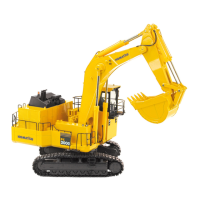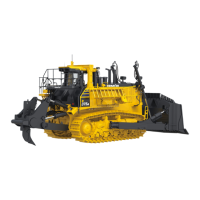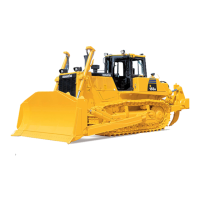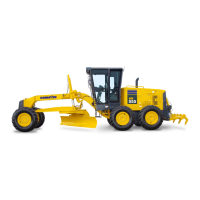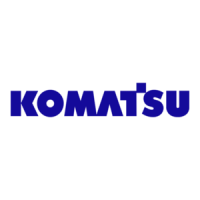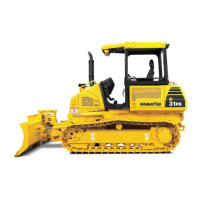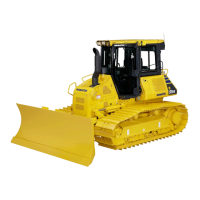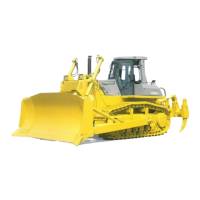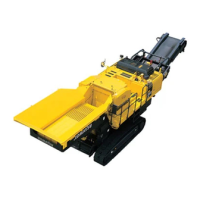2-34
12. OPERATION
1. Check for damage, wear, play in work equipment, cylinders,
linkage, hoses
Check that there are no cracks, excessive wear, or play in the
work equipment, cylinders, linkage, or hoses. If any abnormality
is found, repair it.
2. Remove dirt and dust from around engine, battery, radiator
Check if there is any dirt or dust accumulated around the engine
or radiator. Check also if there is any flammable material (dead
leaves, twigs, grass, etc.) accumulated around the battery or
high temperature engine parts, such as the engine muffler or
turbocharger. Remove all such dirt or flammable material.
3. Check for leakage of water or oil around engine
Check that there is no leakage of oil from the engine or leakage
of water from the cooling system. If any abnormality is found,
repair it.
4. Check for leakage of oil from transmission case, axle, hydraulic
tank, hoses, joints
Check that there is no leakage of oil. If any abnormality is found,
repair it.
5. Check for leakage of oil from brake line
Check that there is no leakage of oil. If any abnormality is found,
repair it.
6. Check for damage or wear to tires, loose mounting bolts
Check for cracks or peeling of the tires and for cracks or wear to
the wheels (side rim, rim base, lock ring). Tighten any loose
wheel nuts. If any abnormality is found, repair or replace the
part.
If any valve caps are missing, install new caps.
7. Check for damage to handrail and steps, loose bolts
Repair any damage and tighten any loose bolts.
8. Check for damage to gauges, monitor, loose bolts
Check that there is no damage to the gauges and monitor in the
operator's cab. If any abnormality is found, replace the parts.
Clean off any dirt on the surface.
9. Check for loose air cleaner mounting bolts
Check for any loose mounting bolts, and tighten if necessary.
10. Check for loose battery terminals
Tighten any loose terminal.
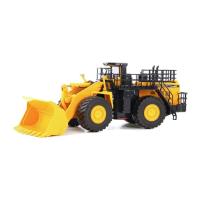
